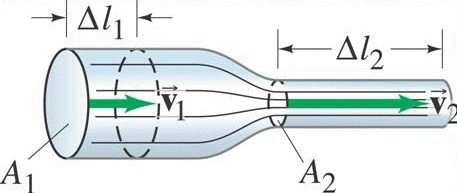Continuity Equation
The continuity equation in physics is an equation which explains the transport of a conserved amount. As energy, mass, momentum, electric charge and other natural quantities are conserved beneath their respective suitable situations; a diversity of physical phenomena might be explained by using continuity equations.

The continuity equations are stronger, local kind of conservation laws. For illustration, it is true that "the sum energy in the universe is conserved". Though this statement does not instantaneously rule out the possibility that a lot of energy could vanish from Earth whereas concurrently appearing in the other galaxy. A stronger statement is that energy is nearby conserved: Energy can neither be created nor destroyed, nor it can "teleport" from one place to other-it can only move by a nonstop flow. A continuity equation is the mathematical way to state this type of statement.
Continuity equations more commonly can involve "source" and "sink" terms that permit them to explain quantities that are frequently though not always conserved, like the density of a molecular species that can be formed or destroyed by chemical reactions. In an everyday illustration, there is a continuity equation for the number of living humans; it has a "source term" to account for people giving birth, and a "sink term" to account for people dying.
Any continuity equation can be stated in an "integral form" (i.e., in terms of a flux integral), that exerts to any finite area, or in a "differential form" (i.e., in terms of the divergence operator) that exerts at a point.